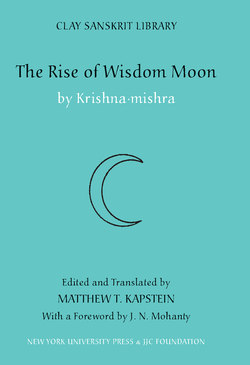Читать книгу The Rise of Wisdom Moon - Krishna mishra - Страница 29
На сайте Литреса книга снята с продажи.
ОглавлениеINTRODUCTION
throne. If the Shri Kirti Varma was a real being, he probably reigned over Magadha or Behar, the sovereigns of which also extended their empire to the provinces which lie northward of the Ganges; for Varma, or warrior, was a family name assumed by the Magadha kings, and Shri was prefixed as a title, intimating success or prosperity. If the conjecture be correct, it would lead us to ascribe a considerable antiquity to the Play.2
He goes on to propose that it should be dated to the latter half of the first millennium ce, though without finding evidence for a more precise estimation.
That the pandit with whom Taylor worked was inclined to regard the occurrence of the name Gopala as strictly referring to god Krishna was perhaps a legacy of the popularity which the play came to enjoy in north Indian Vaishnava circles from about the fifteenth century on, leading him to interpret away its historical references in the light of this understanding. Taylor, however, proved to be correct in his guess that Kirti·varman was a real individual, though his attempt to place him in the kingdom of Magadha was in error. It was not, at any rate, until 1865, when Alexander Cunningham discovered an inscription of the Chandella dynasty at Mahoba, situated in modern Uttar Pradesh to the north of Khajuraho, that the evidence needed to decide the issue at last became available. Though Cunningham was aware of the significance of his find, the results were for the first time set out clearly by E. Hultzsch, in a study of the Mahoba inscription published in 1888. For here, in the 26th verse, we read that Kirti· ________
xxvii
